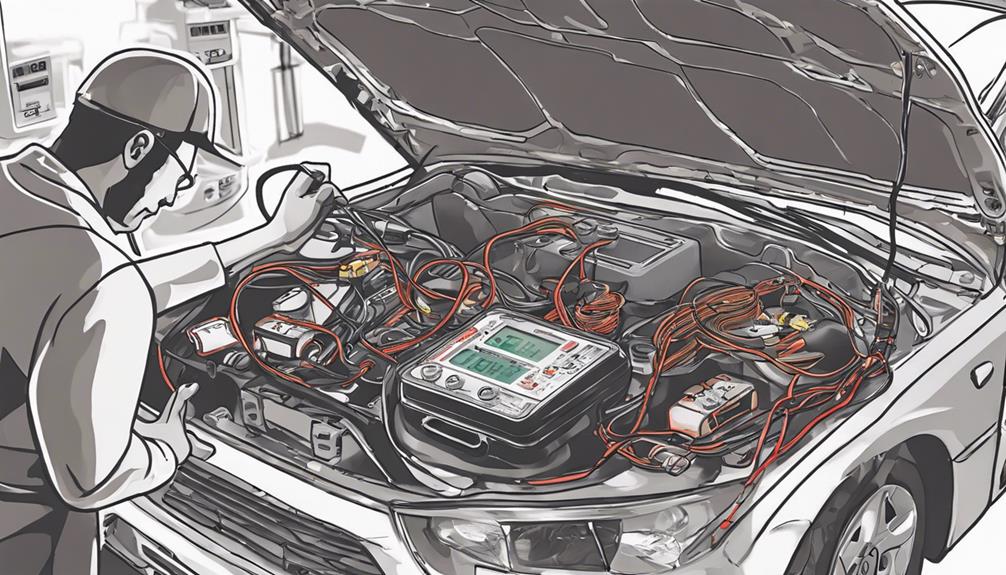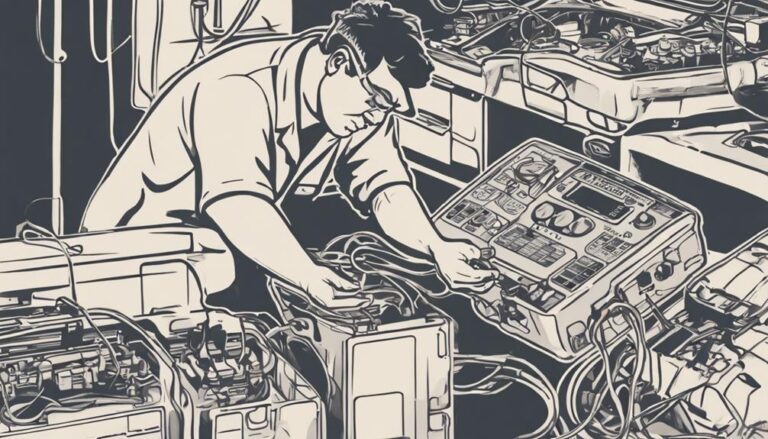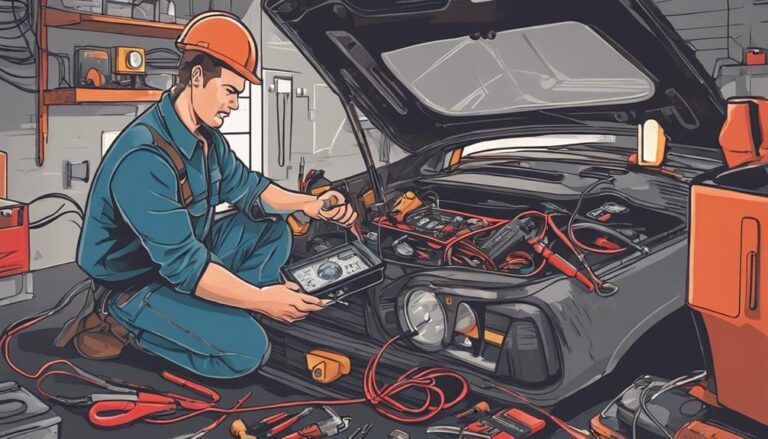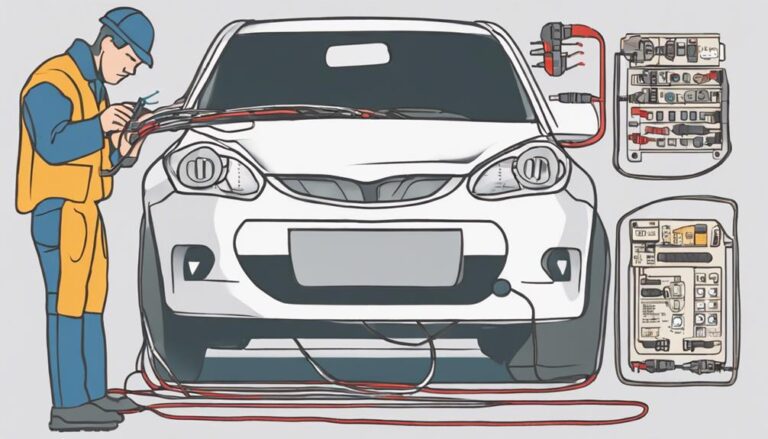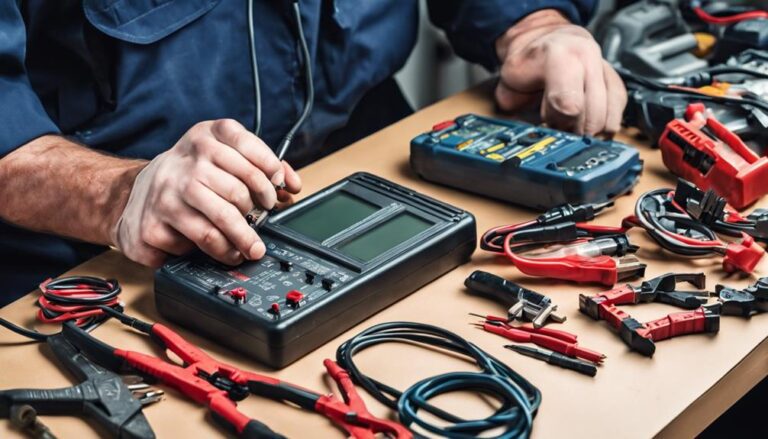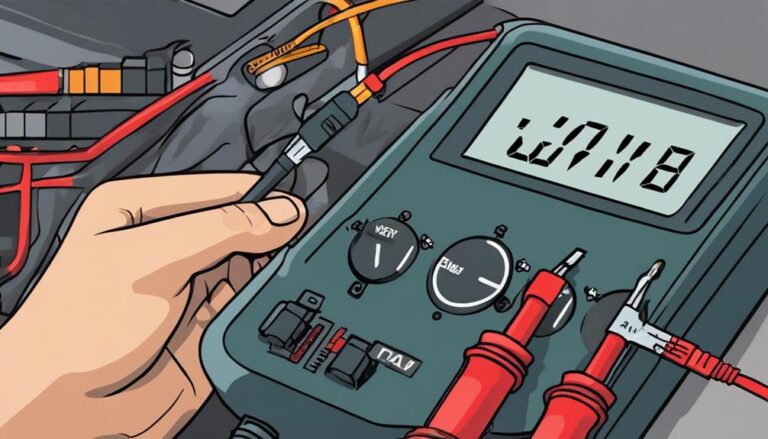What Are Common Methods for Diagnosing Car Electrical Issues?
When diagnosing car electrical issues, you must start by conducting visual inspections for loose connections or damaged components like battery terminals, alternators, and fuses.
However, these initial checks may not always pinpoint the root cause of the problem.
This is where advanced diagnostic tools and techniques come into play.
Stay tuned to discover how utilizing specialized equipment and testing methods can help you unravel complex electrical mysteries lurking in your vehicle.
Key Takeaways
- Utilize visual inspections for early issue identification.
- Employ multimeters to diagnose voltage, current, and resistance.
- Test specific components like lights, relays, and switches.
- Seek professional help for complex electrical problems.
Importance of Car Electrical System
Understanding the crucial role of the car's electrical system is fundamental in ensuring optimal vehicle performance and safety on the road. Safety precautions are paramount when dealing with the electrical components of your car. As a vehicle owner, it's essential to recognize that the electrical system powers critical elements such as the starter, alternator, lights, and various safety features. To maintain the safety and functionality of these components, it's advised to seek professional expertise when handling any electrical issues.
Professional expertise is crucial in ensuring that the electrical system is maintained correctly to prevent performance issues and guarantee the safety of both the vehicle and its occupants. By adhering to safety precautions and consulting experienced technicians, you can address any potential electrical problems effectively. Remember that proper maintenance and timely repairs not only enhance the performance of your car but also play a significant role in ensuring your safety on the road.
Recognizing Common Electrical Issue Symptoms
To identify common electrical issue symptoms in your car, pay close attention to indicators such as dimming or flickering lights, malfunctioning power accessories, frequent battery problems, strange smells, smoke, and blown fuses.
- Dimming or flickering lights: These can indicate alternator or battery issues in the electrical system.
- Malfunctioning power accessories: Issues with windows or the radio can signal potential electrical problems.
- Frequent battery problems: These may be a warning sign of impending alternator failure.
- Strange smells or smoke: Such odors suggest severe underlying electrical issues.
- Blown fuses: Common indicators of potential short circuits or overloaded circuits.
Being aware of these warning signs can help you troubleshoot electrical problems early on. Diagnostic tools and repair solutions are available to assist in identifying and resolving these issues promptly. By recognizing these symptoms, you can take proactive measures to maintain your car's electrical system and prevent more significant problems down the road.
Visual Inspection Techniques
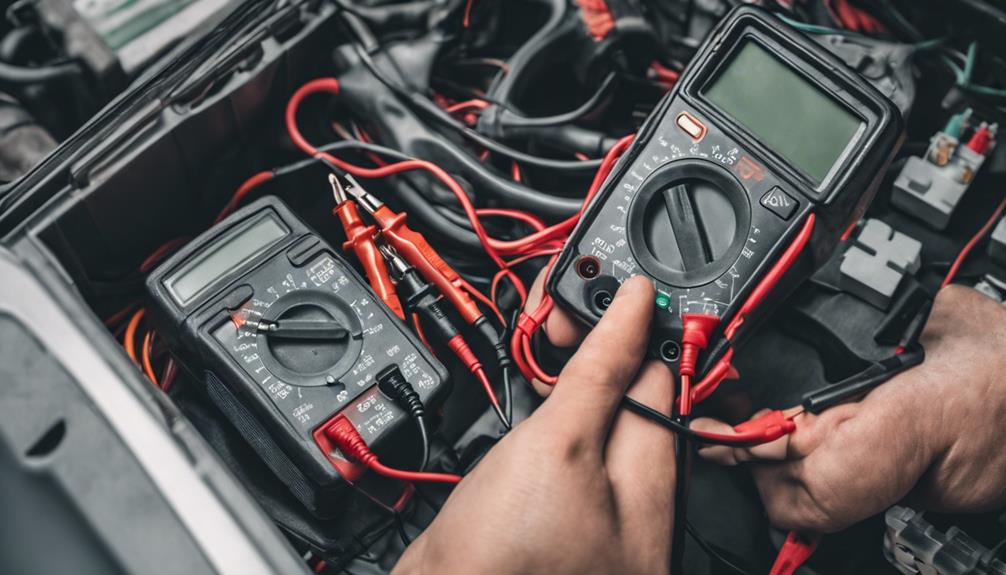
Conducting a thorough visual inspection of your car's electrical components is essential for detecting potential issues early on. Start by checking the battery terminals and cables for any signs of corrosion or looseness. Corrosion prevention is crucial to maintaining good electrical connections.
Inspect the alternator and starter for visible damage or loose connections, as these are vital components in your car's electrical system. Additionally, examining the fuse box for melted fuses or loose connections is important as well.
Visual inspection allows you to identify visible signs of potential electrical system issues before they escalate. This methodical approach is a fundamental step in diagnosing car electrical problems before proceeding to more advanced testing methods. By regularly checking connections and practicing corrosion prevention, you can ensure the longevity and efficiency of your car's electrical system.
Utilizing Multimeter for Diagnosis
Utilize a multimeter to accurately measure voltage, current, and resistance in your car's electrical system for precise diagnosis of potential issues. When troubleshooting car electrical problems, mastering multimeter techniques can be invaluable. Here are some ways a multimeter can aid in diagnosing issues:
- Testing Battery Voltage: Use the multimeter to check the battery voltage and identify charging system issues promptly.
- Checking Alternator Output: Verify the alternator output with the multimeter to ensure it falls within the proper voltage range during operation.
- Verifying Voltage Drop: Detect wiring or connection problems by confirming voltage drop with the multimeter.
- Diagnosing Specific Components: Multimeters are indispensable for diagnosing various electrical components such as lights, power windows, and the audio system.
- Ensuring Proper Functionality: Regularly using a multimeter for diagnostics helps maintain your car's electrical system's health and functionality.
Specific Component Testing Methods
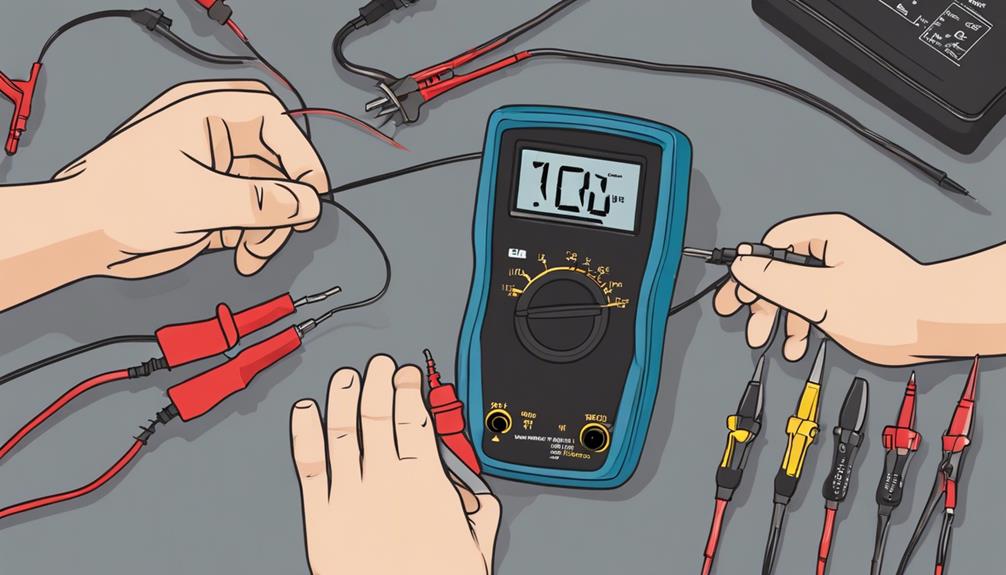
When testing specific components in your car's electrical system, begin by examining the lights and bulbs for proper functionality using a multimeter or a test light. Check for voltage drop across the light circuit to ensure proper power supply.
If issues persist, move on to relay testing. Relays are critical components that control the flow of electricity to various systems in your car. Use a multimeter to test the relay's functionality by checking for continuity and proper voltage levels.
Additionally, when troubleshooting power windows and locks, focus on testing the switches, motors, and wiring connections for any faults. Evaluate the audio system by systematically testing speakers, head units, and wiring for static or distorted sound.
For ignition system problems, inspect the starter, battery, ignition switch, and related components for any malfunctions. Lastly, ensure to inspect sensors, relays, and modules using diagnostic tools and procedures to pinpoint faults accurately.
Frequently Asked Questions
How Do You Diagnose an Electrical Problem in a Car?
To diagnose an electrical problem in a car, first, conduct a visual inspection. Then, use a multimeter to test for voltage drop. Consider fault code scanning with diagnostic software for a comprehensive diagnosis and repair plan.
How Do You Diagnose an Electric Car?
When diagnosing an electric car, start with a thorough battery inspection and voltage testing. Use diagnostic software to pinpoint sensor malfunctions. Seek expert technicians with specialized training in electric vehicle technology for accurate analysis and repairs.
How Do You Test an Electrical Circuit in a Car?
To test an electrical circuit in a car, you must perform voltage drop testing and continuity testing. These methods help unveil hidden issues within the system, guiding you towards pinpointing faults accurately for successful troubleshooting and repair.
How Do I Know if My Car Wires Are Bad?
To determine if your car wires are bad, inspect for signs of damaged insulation, high resistance, or voltage drop. Test continuity with a multimeter and check connections for corrosion. Address any wear promptly to prevent issues.
Conclusion
In conclusion, tackling car electrical issues requires a methodical approach. By conducting visual inspections, utilizing a multimeter, and testing specific components, you can efficiently diagnose and resolve problems.
Remember, seeking professional help for complex issues is crucial. Stay savvy and systematic in your approach to ensure safe and effective repairs.
Mastering these methods will make you a meticulous mechanic in no time!

